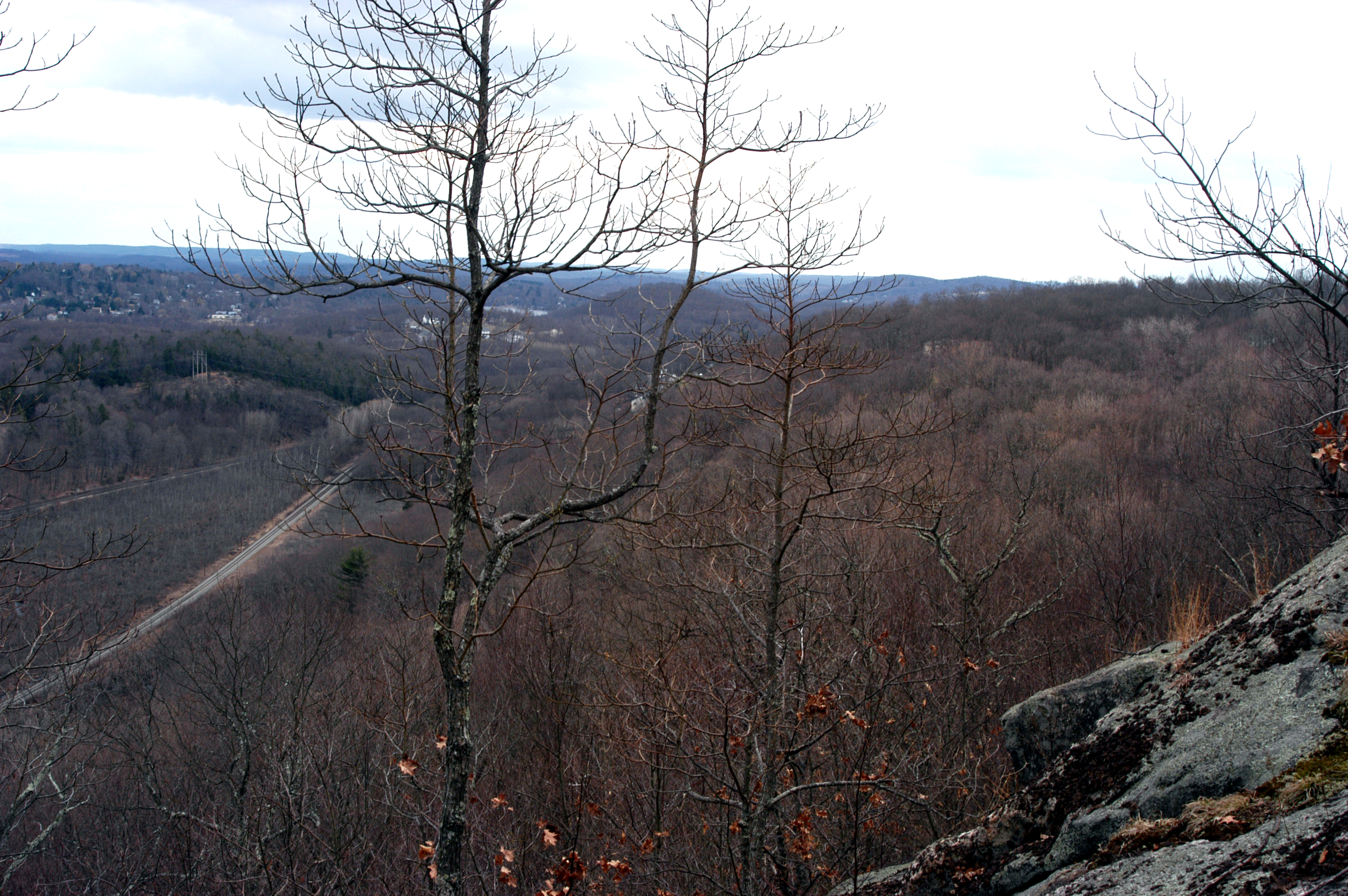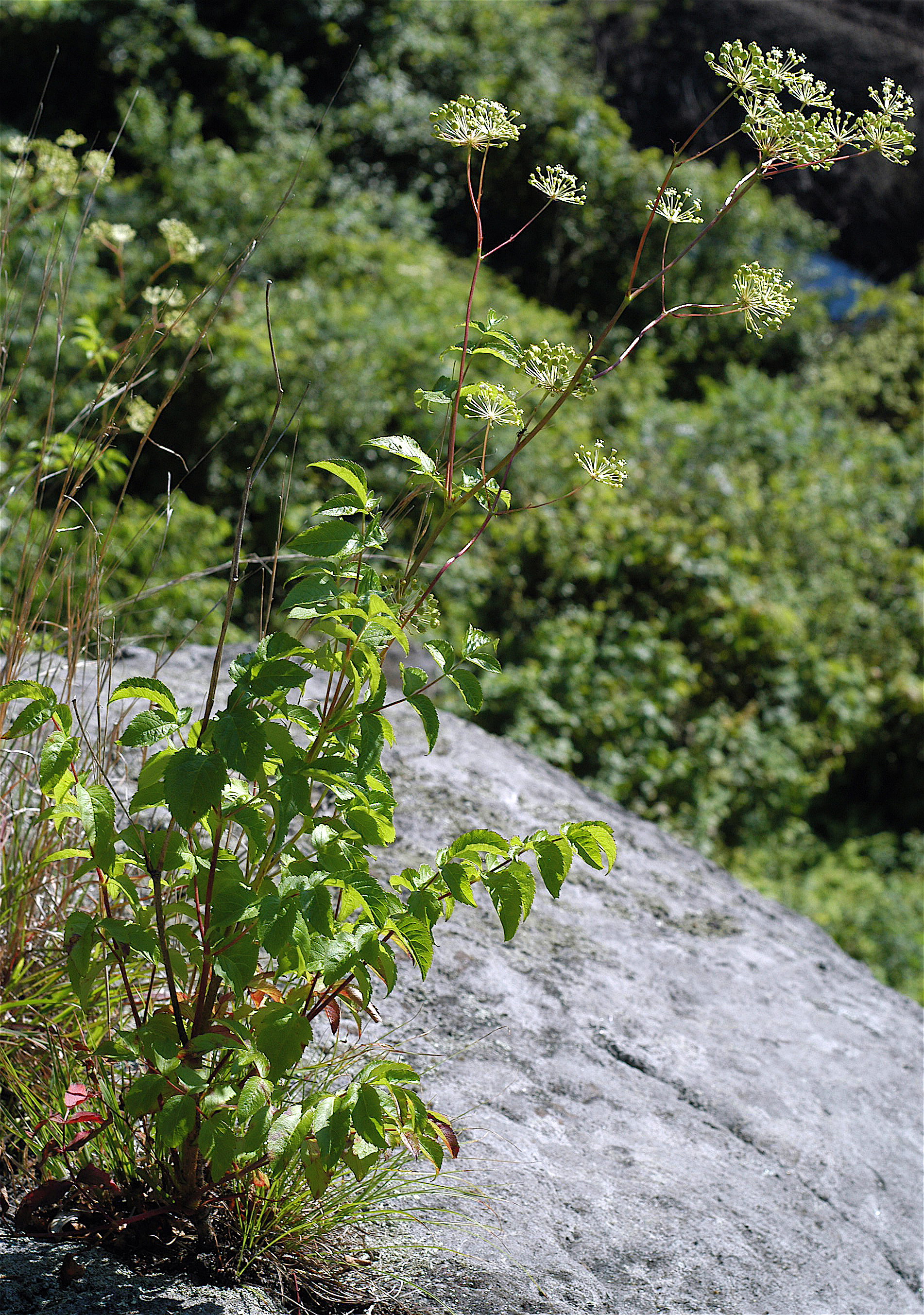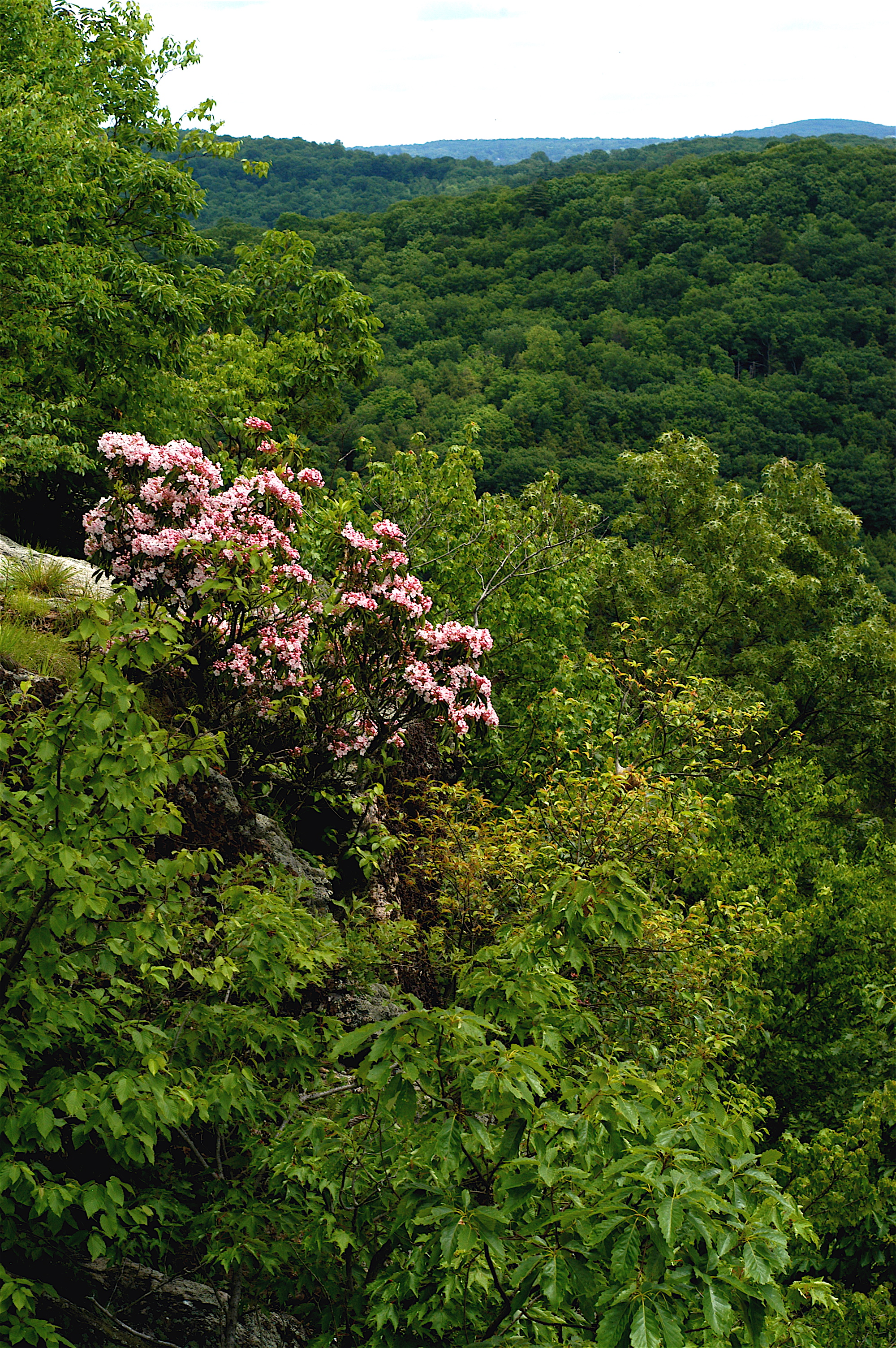|
Habitats
Terrestrial
System. Open Uplands Subsystem-- Cliff community
|

|
|
|
Cliff community with Sassafras albidum
|
|
Physical Setting: Cliff communities are not uncommon in
the Hudson Highlands. Most of these can be seen from afar--even
from the air. There are two within the study area, one facing
east and one facing west. Both are within Chestnut oak forest on
hilltops.
The east-facing cliff
(pictured) is located on the eastern edge of the summit of the
un-named highest hill at Ice Pond. It consists of a series of
exposed rocks, approximately 135 meters long and about 35 meters
wide centered at approximately 41.455ºN, 73.617ºW (±
10 m) and about 260 meters above sea level. There are several
gaps where the rock dips below the surface.
The west-facing cliff is
located on the western flank of the area's un-named southeastern
hill. Like the other, it consists of a series of exposed rocks,
with gaps, but this one is lower in elevation and the exposed
rock is disjointed. This cliff is approximately 60 meters long
and varies from one to ten meters wide. The approximate center is
at 41.445ºN, 73.614ºW and about 170 meters above sea
level.
Substrate and Hydrology:
Both cliff communities are created by massive gneiss
outcrops. There is no soil, except in crevices and water quickly
drains away. These cliffs are quite dry between rains.
|
 |
|
Aralia hispida,photo
by Greg Russo
|
Biota: Where there
is vegetation on the rocks themselves, it consists exclusively of
mosses and lichens. Vascular plants are confined to the numerous
crevices and rock edges that retain soil and moisture. The
dominant woody plants are mostly shrubs or stunted trees
including Kalmia latifolia L. and Gaylussacia baccata
(Wagenh.) K. Koch, Quercus prinus L., Quercus
ilificolia Wagenh, Sassafras albidum (Nutt.) Nees,
Quercus rubra L, Betula populifolia Marshall, Pinus
strobus L., Amelanchier arborea (F. Michx.) Fern. and
others. These cliffs are the only place at Ice Pond where
Hypericum gentianoides (L.) Britton, Sterns &
Poggenb., Quercus illicifolia, Schizachyrum scoparium
(Michx.) Nash and Aralia hispida Vent. are found.
|

|
|
|
Kalmia latifolia, photo by Greg Russo
|
|
|
|
Cultural: The
cliffs appear to be little-disturbed, probably because they are
so unsuitable for corps or animals. Today, the west cliff is a
popular hiking destination.
|